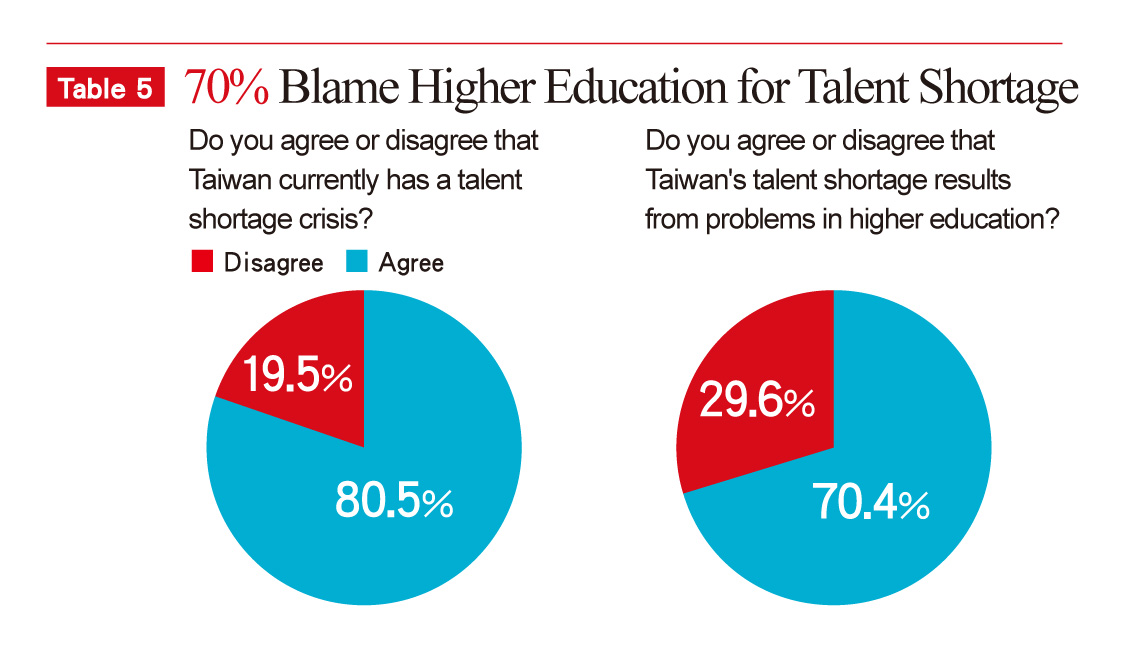
After a period of expansion and reform, Taiwan’s higher education enjoys a high level of participation and a reputation for quality in Asia.The percentage of the population between ages 25 and 64 with a university or an advanced degree reached 45 percent in 2015, significantly higher than the 36 percent average for OECD countries. But the system has been facing increasing pressure from within and from outside of the country, making its future seem less optimistic.
A Candle Burning at Both Ends
During the period 1949 to 1987, the higher education system underwent a phase of planned growth. Many junior colleges and private universities were established to train skilled human resources for emerging industries. During the 1990s the deregulation of education was broadly advocated. In 1994, the “410 Demonstration for Education Reform” called for an increased number of senior high schools and universities in each city to reduce the pressure of massification. In response to public demand, the number of higher education institutions increased considerably, from 130 in 1994 to 164 in 2007. Some were new, but many were upgraded junior colleges or technical institutes. In 1991, the net enrollment rate (NER) was 20 percent, only slightly above the threshold of an “elite” system. It quickly increased to 50 percent in 2004, reaching the “mass” threshold, and 70 percent in 2013 reaching “universal” coverage. The percentage of high school graduates entering university reached 95 percent in 2008 and has remained constant since.However, this extremely high enrollment rate reflects the failure of the system to be selective and a decline of competitiveness within higher education.
Low Birthrate
A significant risk factor for Taiwan is the low birthrate. According to recent data released by the Central Intelligence Agency (CIA) World Factbook, Taiwan has the third-lowest birthrate in the world. Young couples in Taiwan worry about low salaries, the cost of housing, the cost of education, and achieving a satisfactory standard of living; some embrace DINK (“double income no kids”) as an attractive lifestyle. The Taiwanese government sensed that the situation was already critical in 2011, but is still grappling with how to solve the problem. According to the Ministry of Education, higher education enrollment is expected to decrease from 273,000 in 2015 to 158,000 by 2028. This decrease will have a huge impact on the higher education system, with 20 to 40 universities estimated to be in danger of disappearing within five years, especially small and private universities in the suburbs.
The China Factor
In 2016, the Democratic Progressive Party (DPP), which stands for the ideology of Taiwan independence, won the presidential election. Because the DPP does not accept the Chinese government’s “One China Policy,” the relationship between China and Taiwan soon came to an impasse, directly impacting Chinese tourists and students coming to Taiwan. The number of short-term Chinese students in Taiwan decreased abruptly by 21 percent from 2016 to 2017 as a result of a ban by the Chinese government. Chinese scholars who want to visit Taiwan are expected to face more rigorous vetting by the Taiwanese government. Taiwanese students are no longer encouraged to study in China; as a result of these politics, the flow of knowledge between China and Taiwan has been stifled, contributing to enrollment decline.
Although the communication between the two governments is temporarily blocked, the Chinese government still endeavors to push for unification through soft means. For example, it announced “a package of 31 measures” in the spring 2018, to attract young Taiwanese professionals to study, work, and live in China. Coincidentally, in April 2018, an additional “60 measures” was released by Xiamen city, which plans to provide 5,000 job vacancies per year and many other benefits to Taiwanese people. In May 2018, 30 universities in the Jiangsu and Zhejiang provinces in China opened highly-paid professorships, aiming to recruit 150 elite Taiwanese PhD professionals to teach in China. These policies and initiatives from China have attracted attention from the Taiwanese people and are seen as a huge pull factor, potentially triggering a brain-drain and talent deficit crisis in Taiwan. To top it all off, Chinese universities are welcoming Taiwanese high school graduates, allowing them to apply directly and granting them eligibility for scholarships. More parents are considering sending their children to universities in China to improve their job prospects.
Reflections
Talent is a valuable asset to a country and universities are important to the cultivation of future talent. Taiwanese higher education has gone through the “elite” and “mass” stages, reaching universal enrollment within only few decades. It produced highly-educated citizens for society and valuable human resources for the development of the country, but it also created an oversupply. Employers face difficulties in determining which applicants are the most competent because of the increased number of degree holders, particularly with master and doctoral degrees. In addition, with the impending slowing of the economy and industrial upgrading, fewer vacancies are expected. Facing increasing global competition and the strong pull of China, higher education in Taiwan is in urgent need of transformation.
Currently, there is no broadly accepted mechanism to transform or shut down poorly run universities. These endangered private universities prefer to operate as long as possible which is harmful to students and to the entire higher education system. The Taiwanese government should facilitate a university elimination mechanism while protecting a student’s right to education and the teacher’s right to work. The government could properly intervene where universities demonstrate low quality or poor performance, transform or close institutions when student numbers are decreasing, and reduce wasted investment in higher education.
We should recognize that the real crisis in higher education is not being able to pursue excellence, rather than a lack of students. Although increasing enrollment numbers could solve the immediate problem, the improvement of quality will take more time and effort but will offer greater success to Taiwan in the long run.
source:-.insidehighered




